

Follow TILT on Twitter!
June 3 review: PopMatters.com: "A thoughtful and grounded look at the pinball industry's efforts to adapt to the digital age..."
April 25 interview: Crave Online interview with director Greg Maletic.
April 15 interview: iF Magazine interview with TILT director Greg Maletic.
» April 8 DVD release: Buy it now!
April 8 interview: Game, Set, Watch interview with TILT director Greg Maletic.
April 8 review: The New GAMER's Glenn Turner reviews TILT.
Follow TILT on Twitter!

TILT INCLUDES interviews with many legends of the pinball industry:
|
George Gomez was one of Williams leading pinball designers in the '90s and one of the inventors of Pinball 2000. While at Williams, George designed hits like Corvette, NBA Fastbreak, and Monster Bash. After leaving Williams in 1999, George became a design lead at Midway Games working on games such as NBA Ballers, and in his spare time developed the hit Lord of the Rings pinball machine for Stern Pinball. |
 |
|
Pat Lawlor may be the most successful pinball designer of all time, with incredible hits like The Addams Family, Twilight Zone, and Funhouse, in addition to being one of the inventors of Pinball 2000. After leaving Williams in 1999, Pat founded Pat Lawlor Design and has gone on to design hits like Monopoly and NASCAR for Stern Pinball. |
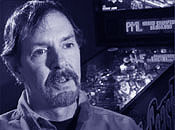 |
| Larry DeMar is one of the coin-operated industry's most significant players. He's written software for hits in both the video game (Defender, Robotron, Stargate) and pinball (Black Knight, High Speed, The Addams Family) worlds, not to mention the operating system software that drove Williams pinball games for nearly twenty years. Larry became the Director of Engineering at Williams in 1995 before leaving in 1999 to start Leading Edge Design, a creator of electronic gaming machines. |
|
| Tom Uban first came to Williams' legendary pinball design organization in 1993 and made a name for himself by creating software for hits like Corvette, Johnny Mnemonic, and NBA Fastbreak. Tom is one of the co-inventors of Pinball 2000 and was the system architect for the Pinball 2000 operating system. | 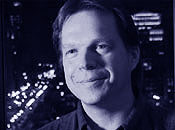 |
|
Cameron Silver moved from Australia in 1995 to work at Williams. In addition to assisting on the Pinball 2000 operating system, Cameron wrote software for redemption machines like Ticket-Tac-Toe and pinballs such as Scared Stiff, Cirqus Voltaire, and the Pin 2000 machine Star Wars: Episode I. |
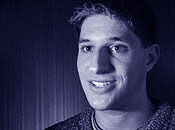 |
|
Duncan Brown moved his family from Virginia in 1997 to become a part of Williams' pinball organization. Though he first worked in the company's electronic gaming division writing software for slot machines, Duncan soon transferred to Pinball and became a software developer for the Pinball 2000 machine Star Wars: Episode I. Duncan is an avid pinball collector and historian. |
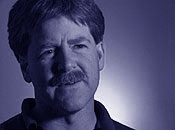 |
| Louis Koziarz arrived at Williams in 1994 and soon became one of the company's leading software developers. Louis worked on games like Tales of the Arabian Nights and No Good Gofers, and was one of the major contributors to the Pinball 2000 operating system. Louis is now a pinball designer and programmer at Pat Lawlor Design. His most recent games include Monopoly and Roller Coaster Tycoon. | 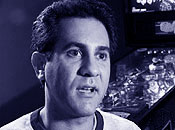 |
| A renowned designer while working at Bally in the '60s, '70s and '80s, Jim Patla designed more than forty pinball machines including Mata Hari, Playboy, and Centaur. After Bally was purchased by Williams in 1988, Jim became Director of Product Development at Williams until 1999, when he transferred to the company's gaming division. | 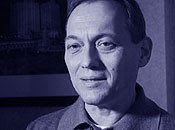 |
|
Roger Sharpe became one of the pinball industry's most well-known and respected figures after authoring the book Pinball! in 1977, which quickly became the bible of the industry. Roger went on to design pinball machines for both Game Plan and Williams, and currently works for Williams (now WMS Gaming) as their Licensing Brand Manager. |
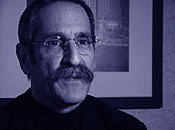 |
|
A legend in the pinball industry, Steve Kordek designed his first pinball machine—Triple Action—in 1949. With Triple Action Steve became the first designer to place two flippers at the bottom of the playfield, an arrangement that forever after became the industry standard. Steve went on to design nearly one hundred other pinball machines until retiring from Williams in 2000. |
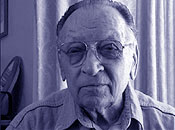 |
|
In addition to being one of the world's best pinball players, Lyman Sheats has achieved notoriety by designing the software for legendary Williams pin-games like Attack From Mars, Medieval Madness, and Monster Bash. Today, Lyman works for Stern Pinball and is the software architect of Stern's next-generation pinball operating system. |
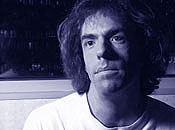 |
| Declared an "All-American hero" and "genius" by the media, Skip Heller is an accomplished musician and composer, and the author of TILT's luxurious exotica-style soundtrack. "An excessively versatile artist," says Isaac Josephson in Downbeat, "he has served as exotica master Les Baxter's score librarian, done time as tour guitarist for NRBQ, written big band scores for commission, and recorded works that could arguably be categorized as jazz, rockabilly, space-age pop, cartoon music, Latin R&B and classical." Photo credit: Melinda di Mauro |
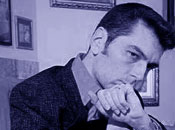 |
Greg Maletic is the writer, director, and producer of TILT, his first film. He is currently the Vice President of Product Design at Bunchball, a social game development company. Prior to Bunchball Greg worked as a freelance software developer and illustrator in San Francisco while developing the film. In the late '90s Greg was a co-founder of San Francisco-based Zero G Software, a leading producer of software installation solutions, and before Zero G worked as a Product Marketing Manager at Apple Computer in Cupertino, California. Greg has an MBA from the University of Michigan and a BS in electrical engineering and computer science from Duke University. Outside of producing this documentary, Greg loves watching movies, plays a lot of videogames, and lives with his wife and small dog in the South of Market area of San Francisco.
|
Buy the TILT DVD! |

|